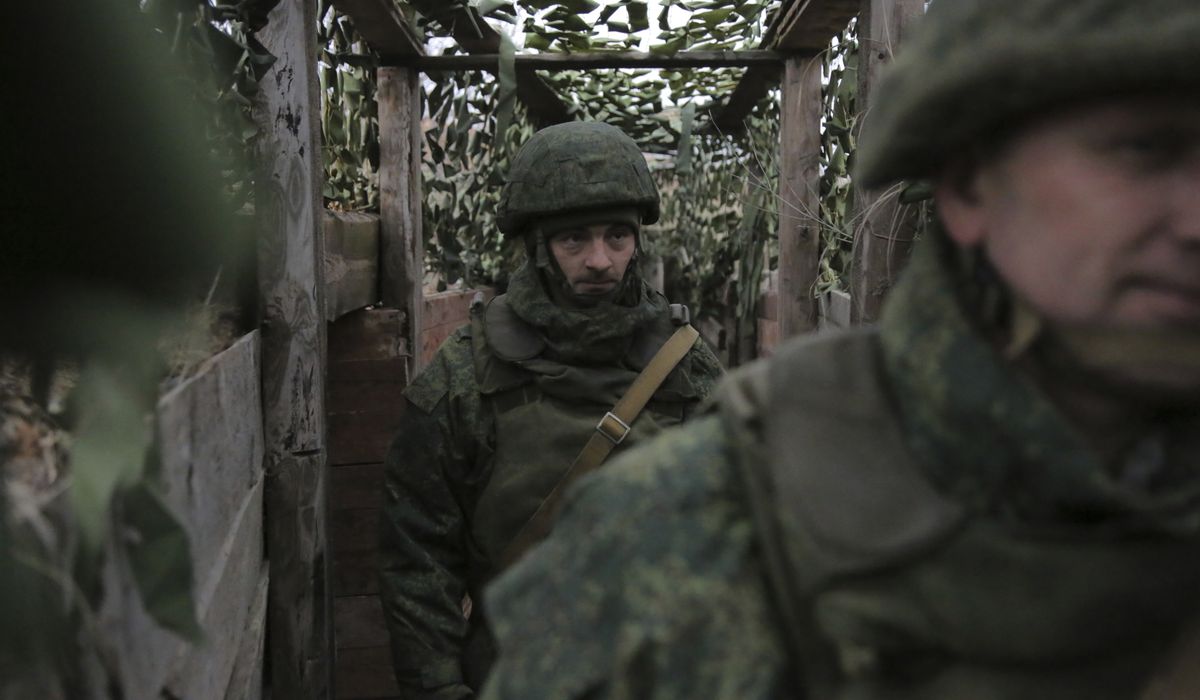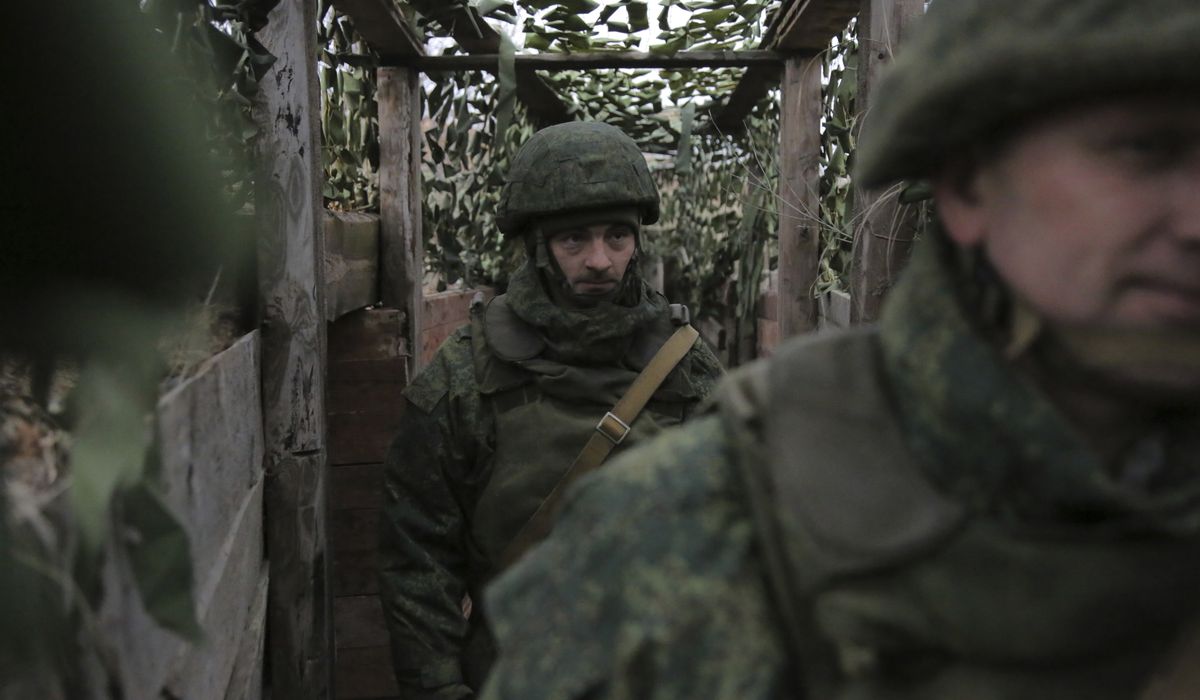
On paper, it’s an obvious mismatch.
The Ukrainian military is vastly outmanned and outgunned by its neighbor and rival Russia. The nearly 100,000 Russian troops now stationed along the nations’ restive border represent less than 10% of the active-duty military personnel Moscow could bring to bear in a full-scale invasion. The Ukrainian military has about 255,000 forces in its own right. Russia‘s roughly 4-1 manpower edge would only grow if each nation called up all of its reserves for all-out war.
Despite hundreds of millions of dollars in U.S. military aid and multiple deliveries of Javelin anti-tank missiles capable of inflicting serious damage on Russian armored columns, Ukraine is still at a massive disadvantage in military weapons, vehicles and hardware. The number of Russian guns, tanks, planes, helicopters and artillery dramatically dwarf those of Ukraine.
The figures are no surprise given Russia‘s military history and the amount of firepower left over from its historic Cold War-era buildup. Although Russia is no longer the power it was during the Soviet era, it maintains one of the highest military budgets in the world — about $42 billion annually compared with Ukraine‘s $9.6 billion, according to data compiled by the Global Firepower Index.
Military analysts stress that the tale of the tape doesn’t tell the full story when it comes to a potential Russia versus Ukraine clash. No one argues that Russia would win decisively in a vacuum, but the real-world horror of a full-scale land war in the 21st century might play to Ukraine‘s advantage, as would a soaring level of morale among Ukrainian troops eager to check Moscow‘s aggression and prevent Russian President Vladimir Putin from seizing more territory through force, as he did with the Crimean Peninsula in 2014.
Against that backdrop, Ukraine‘s ultimate goal wouldn’t be to defeat Russia outright in battle, but instead to dish out as much punishment as possible and change the Kremlin’s willingness to fight.
While ruling out U.S. troop aid, President Biden has promised the most severe economic sanctions yet against Russia in the event of an invasion. The U.S. could attack the value of the ruble or block Russian banks and companies from the international financial system.
In that respect, specialists argue, Kyiv has a chance and a Russian invasion would be no cakewalk.
“If Putin decides he‘s going to invade and conquer Ukraine, no, the Ukrainians can’t prevent him from doing that,” said Frederick Kagan, director of the Critical Threats Project at the American Enterprise Institute who closely tracks the region. “The power imbalance — setting aside the fact that [Putin] could nuke them — is so great that of course they couldn’t reasonably expect to beat the Russian military in a straight force-on-force conflict.”
Still, he said, “Putin isn’t going to deploy all of the forces he has to this fight. And when you actually start looking harder at the limitations on the risks Putin is likely to take, then you get to some scenarios where the Ukrainians could potentially be able to change the balance of risk and reward to Putin in a way that makes this look like a very unattractive proposition.”
Indeed, both the Trump and Biden administrations have signed off on major deliveries of Javelin anti-tank missiles to Ukraine that are designed to do just that: inflict maximum pain on the Russian military, should it mount a full invasion, and force Mr. Putin to decide whether he is willing to let tens of thousands of his people die or permanently cripple his military in a bloody, protracted battle.
Since the Russian president invaded Crimea, American security assistance to Ukraine has exploded. The U.S. has committed more than $2 billion in security aid to Ukraine over the past seven years, according to Pentagon figures. That money is badly needed. The Ukrainian military has been bogged down with fighting in the disputed Donbas region, the site of regular clashes between Ukrainian forces and a separatist movement with solid backing from Russia.
Power imbalance
Politically, the U.S. has put public pressure on Mr. Putin and warned against an invasion. Mr. Biden and Mr. Putin spoke via video conference last week. White House National Security Adviser Jake Sullivan on Wednesday spoke with his Russian counterpart and “reiterated our strong concerns about the Russian military buildup on the border with Ukraine,” the White House said in a statement.
European powers have warned the Kremlin against any offensive moves.
“Any violation of territorial integrity will have its price — a high price — and we will speak with one voice on this together with our European partners and our trans-Atlantic allies,” new German Chancellor Olaf Scholz said Wednesday.
European Union foreign policy chief Josep Borrell said Western nations are boosting their rhetorical and material support for Ukraine in hopes of dissuading any idea of a Russian military operation.
“We are in deter mode,” Mr. Borrell said while chairing a meeting of the EU’s foreign ministers in Brussels this week. “In any case, we will send a clear signal that any aggression against Ukraine will have a high cost for Russia.”
While the U.S. and its NATO allies seemingly have ruled out sending their own ground troops to Ukraine, some critics say Mr. Biden should take a harder line. Rather than rely on discussions with Moscow, they say, the U.S. can and should dramatically increase shipments of military equipment to Ukraine.
“Thankfully, the United States doesn’t have to deploy tens of thousands of troops to Ukraine. We don’t have to fight for the Ukrainians. … They want American diplomatic support, and they would like American hardware, military equipment, defensive equipment to help them defend themselves,” Luke Coffey, director of the Allison Center for Foreign Policy Studies at the conservative Heritage Foundation, said during a virtual event on Russian-Ukrainian tensions this week.
Biden administration officials said they have ramped up security assistance to Ukraine this year.
Still, no amount of financial aid will change the fact that the raw numbers tilt dramatically in Russia‘s favor — or that Ukraine looms far larger in the Russian strategic calculus of national interests than it does for the United States.
Russia boasts 4,144 total military aircraft, including 789 fighter aircraft, compared with just 285 and 42, respectively, for Ukraine. Russia‘s military has more than 27,000 armored vehicles — more than twice as many as Ukraine, according to Global Firepower Index data. While the Javelin missiles could slow Russia‘s advance, the Russian military has roughly 13,000 tanks at its disposal that almost surely would overwhelm Ukraine‘s defenses.
Russia also has more than 8,300 pieces of towed artillery and mobile rocket launchers, compared with Ukraine‘s 2,590, Global Firepower Index figures show. The potential conflict would take place on land, but the vast difference in sea power also underscores Russia‘s advantage: a fleet of more than 600 vessels, compared with 25 for Ukraine.
Much of Ukraine‘s equipment and weapons need upgrades.
“The equipment inventory still consists predominantly of Soviet-era weaponry. Sustaining and in some cases upgrading these systems is a near-term concern, and equipment replacements will be required over the coming decade in order to forestall potential problems with obsolescence,” reads a section of this year’s “Military Balance” report, prepared by the International Institute for Strategic Studies.
Still, analysts say an invasion may not be Mr. Putin‘s real endgame. The Kremlin seems to be banking on using military force — or the threat of it — to extract concessions from Kyiv and the West. Among the concessions might be guarantees that the U.S. won’t deploy new weapons to Eastern Europe or promises that NATO won’t bring in Ukraine or Georgia as full-fledged members. Mr. Putin has labeled such a move one of his foreign policy “red lines.”
“From Putin‘s perspective, he‘s got to be asking himself, ‘Why fight for what you can get for free?’” said Mr. Kagan, the AEI scholar.








